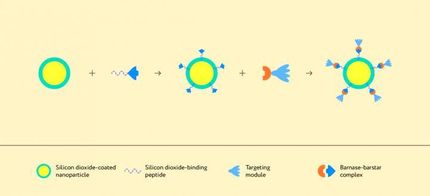New Discoveries and Innovative Technologies Create Growth Opportunities in the IVD Market
Molecular Diagnostic Assays Fuel Excitement over the Prospect of Personalised Medicine Molecular Diagnostic Assays Fuel Excitement over the Prospect of Personalised Medicine and Theranostics
Advertisement
The move by healthcare institutions to minimise errors and control costs is expected to boost the uptake of in vitro diagnostic (IVD) technology on a global scale. The expanding aged population cohort and technological advances in molecular diagnostics will also positively influence the IVD market in the near future.
The European market, already the second largest consumer of IVD products, is likely to grow further following these advances in medical sciences. Global revenues in this industry, which totalled USD 28.68 billion in 2004, are expected to reach USD 43.10 billion in 2011.
However, cost containment efforts and fluctuating economic conditions worldwide are hindering the smooth uptake of IVD technologies. This is even more relevant for developing nations in Asia, Latin America, and Africa.
"In developing countries, poor healthcare infrastructures and struggling economies greatly impede modernisation and create extremely price sensitive environments," explains Frost & Sullivan Research Analyst Ms. Silvia Cerqueira. "Distribution and logistical issues, local supplier presence, and minimal healthcare expenditure also present considerable hurdles to achieving market growth."
Fortunately, healthcare awareness programs and government initiatives to increase spending have started stimulating improvements in medical care and infrastructure in these countries, thereby creating major opportunities for future growth. With governments in nations such as Germany and France working toward raising healthcare standards, the market will expand rapidly in Europe.
Low prices, consolidating multiple tests on a single platform, and customer service also take on renewed importance as markets become highly competitive and consumers raise their demands. "Understanding individual markets and clinical needs is becoming increasingly important to overcome obstacles and promote the adoption of new technologies," says Ms. Cerqueira. "New IVD systems must also address unmet needs and provide substantial added value."
While there are a significant number of emerging technologies, several companies are having trouble in introducing these innovations quickly due to stringent regulatory policies. For instance, in the United States, all clinical diagnostic tools must gain Food and Drug Administration (FDA) approval and comply with the Clinical Laboratory Improvements Amendments of 1988 (CLIA) regulations. Companies must be forward-thinking in the development of new technologies and ensure proper quality control and quality assurance.
Several smaller companies combat this challenge by collaborating with larger companies and thereby benefit from the latter's experience and economic resources.
"In Europe, regulations such as the IVD Directive and CE marking also impede potential market entry of new competitors," observes Ms. Cerqueira. "Due to the substantial cost of a CE mark, companies may have to abandon older generation devices and low-volume region-specific products." However, reforms to boost the healthcare market, especially in the United Kingdom, counterbalance this move toward regularisation.
Despite the regulatory challenges, the IVD market is likely to grow following the breakthroughs in molecular diagnostics and point of care (POC) testing. Manufacturers must offer smaller, integrated, easy to use POC systems that offer networking solutions and facilitate efficient data management. Participants should also maintain a high degree of customer service.
Discoveries and innovations in molecular diagnostics are propelling the advancement of personalised medicine and theranostics and creating new growth opportunities for IVDs. As manufacturers concentrate on providing greater benefits such as early diagnosis, improved decision-making, and better monitoring of treatment, the market will maintain its strong growth trajectory. The rising insurance coverage in countries such as France, Spain, and Germany will also contribute largely to positive trends in the market.
If you are interested in a virtual brochure, which provides manufacturers, end-users, and other industry participants an overview of the latest analysis of the Global In Vitro Diagnostics Market Outlook (F365), send an e-mail to Radhika Menon Theodore, Corporate Communications, using the 'Contact' button below.























































